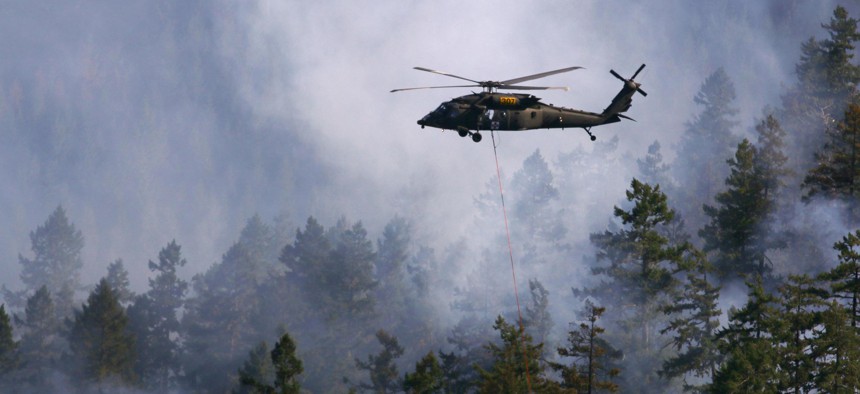ELIZABETH HOWE

The Defense Department could “build a fortress” with all of the reports it has released making statements on climate change without actually implementing anything, Army climate expert Sharon Burke said Thursday. The Army’s Climate Strategy Implementation Plan, released this week, aims to change that.
The implementation plan complements the service’s climate strategy plan, released in February, that called for electric vehicles, microgrids, and more. But it contained no cost estimates, either for the individual programs or the effort as a whole. (“The funding is going to be a moving target,” Paul Farnan, the Army’s principal deputy assistant secretary for installations, energy, and environment, said in February. “This is a strategy that lays out steps…a lot in the coming decade, and even some beyond the next decade.”)
Now, the implementation plan seems to have all the bells and whistles—like a budget. It lays out three lines of effort: installations, acquisition and logistics, and training. Almost half of its pages are made up of a detailed list of goals with deadlines reaching well into the future.
It even includes an appendix of itemized estimated expenses. For example, preparing installations to use less energy and stand up to extreme weather will cost the Army a total of $5.2 billion through fiscal year 2027. The strategy’s acquisition and logistics line of effort is estimated to cost $1.6 billion. Training comes to a budget-friendly $1 million.
What the implementation plan lacks, however, is the technology to carry it out—because that technology does not exist.
“Many of the objectives in the strategy reach out into the 2030s, 2040s, some even all the way up to 2050. Because the long-term goals we have to accomplish…we don’t know how we’re going to accomplish them yet. The technology is going to continue to evolve,” Farnan said at a Center for Strategic and International Studies event.
The climate implementation plan includes some familiar ideas, like microgrids and electric vehicles. But exactly how the Army will electrify all its vehicles, especially the heavy-duty ones, is unknown.
“The honest answer is: I don’t know,” Farnan said. “And that’s why the goal is up to 2050. Because we don’t know how we’re going to get there yet. The technology is not there to give us full electrification of tactical vehicles.”
“I don’t know how we’re going to do battlefield charging yet. Nobody knows that,” Farnan said.
But the implementation strategy released this week is meant to allow the space, time, and funding to come up with those answers.
“It’s setting the foundation for these longer-term goals. And this is going to be an iterative process,” Farnan said.
The Air Force rolled out its own Climate Action Plan this week.
No comments:
Post a Comment